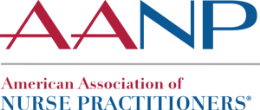Nurse Practitioners Raising Autism Acceptance

This Autism Acceptance Month, discover how early diagnosis can make a huge difference for patients with autism.
In 2021, the Autism Society of America announced that Autism Awareness Month would undergo a name change — renaming this April observance to Autism Acceptance Month. The change signaled shifting attitudes toward autism spectrum disorder (ASD) and those living on the spectrum. According to the Centers for Disease Control and Prevention (CDC), in 2023, approximately 1 in 36 children received an ASD diagnosis by the age of 8. Awareness of autism is at an all-time high. Still, the need to improve early diagnosis of ASD and empower everyone in the autism community to reach their full potential is now greater than ever.
While the diagnosis of ASD is on the rise, patients with ASD might be missing out on crucial care due to diagnostic delays. The National Institute of Mental Health states that “ASD can usually be reliably diagnosed by age 2. It is important to seek an evaluation as soon as possible. The earlier ASD is diagnosed, the sooner treatments and services can begin.” Despite this, the average age of diagnosis for children with autism is a little under 4 1/2 years. With their knowledge of child development, nurse practitioners (NPs) in primary care are well-equipped to identify patients who need to be evaluated for autism.
Combatting Diagnostic Delay
As stated in “An Updated Guide to Autism Screening: A Primer for Nurse Practitioners” in the Journal for Nurse Practitioners (JNP), “data suggest that many parents begin to suspect developmental differences in their child around 1.7 years, but a formal diagnosis is not made on average until the child is 4.4 years old. For many children, this delay in diagnosis also means a postponement in access to intervention services.” In the article, Jenna Reece, MD et al. go on to stress that “Due to younger children’s increased neuroplasticity, they are more likely to demonstrate significant gains from intervention compared with those who receive similar services later in development.”
Though autism is a spectrum disorder with a wide variation of symptoms and severity, patients with ASD often have restricted interests, repetitive behavior, and difficulty communicating with other people — and parents are likely to notice these symptoms in their children early in their development. Reece et al. elaborates on this further, stating, “Seminal research indicates that, compared with children who have developmental delays, children with autism show delays in attention-getting, touch aversions and poor nonsocial visual orientation as early as nine months of age.” NPs seeing younger patients in a pediatric or primary care setting can observe this anecdotal information and pair it with an understanding of the patients’ family history to start the discussion of an early ASD diagnosis.
Screening Across the Lifespan
In a recent article for Neurology Advisor entitled “Autism Spectrum Tests for Children and Adults: A Nurse Practitioner Explains,” Allison Paugh, PMHNP, explained the process for diagnosing ASD. “Typically, the process of diagnosing autism involves pediatricians watching for any signs of abnormal developmental delays at every well-child visit at 6, 9, 12, 18, 24 and 30 months. In the case where the child hasn’t gone to pediatrics and the family comes directly to me, I do face-to-face observations and ask the parent detailed questions.”
Practitioners looking to screen for autism are not alone, as Reece et al. spotlight a variety of diagnostic tools available to support their success: “Among the most common screening tools listed by the American Academy of Pediatrics are the Modified Checklist for Autism in Toddlers, Revised with Follow-Up (M-CHAT R/F), the Social Communication Questionnaire (SCQ) and the Screening Tool for Autism in Toddlers and Young Children (STAT). Each of these tools takes less than 30 minutes for parents or clinicians to complete and can offer providers valuable information regarding any potential deviations in typical development.” Although there are no screening tools available explicitly for adult patients, Paugh uses the Autism Diagnostic Observation Schedule, Second Edition (ADOS®-2) — which she cites as the “gold standard diagnostic test for autism used across the lifespan.”
Review Autism Screening Updates and Earn Free Continuing Education Credit
Do you want to earn free continuing education (CE) credit while staying up to date on autism screening? An Updated Guide to Autism Screening: A Primer for Nurse Practitioners is available until Feb. 28, 2025, in the AANP CE Center and is your opportunity to take insights from the JNP article of the same name and leverage them to earn 1 contact hour (CH) of CE credit. Enroll in this free activity today to gain invaluable knowledge and identify several tools for the pre-screening of ASD.

